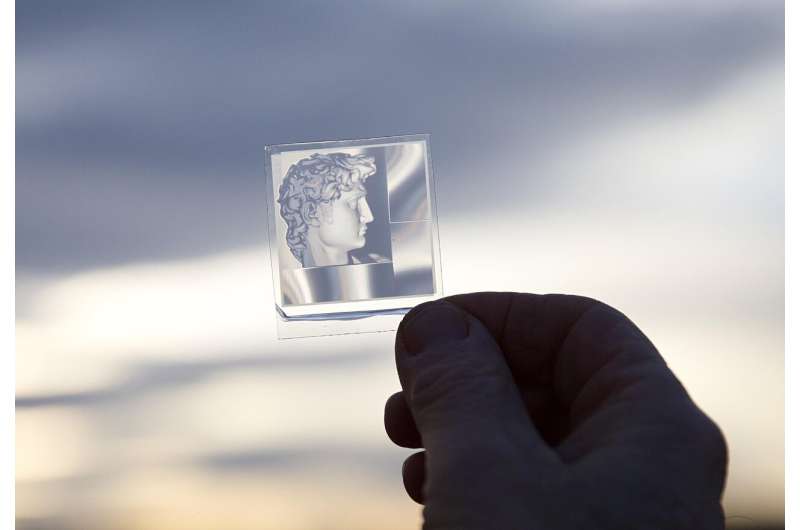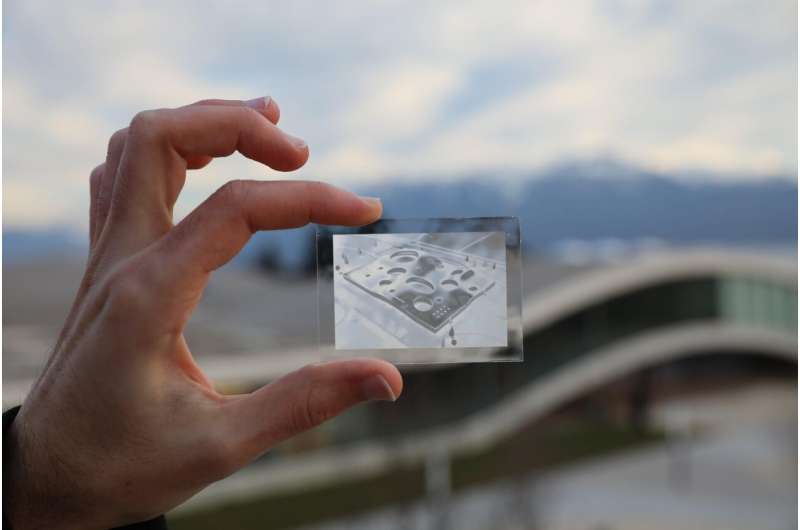Harnessing the moiré effect to make transparent images

Researchers at EPFL have developed a material that combines transparent properties with the moiré effect to produce images. The technology could have interesting decorative and anti-forgery applications.
Applying a moiré pattern to a transparent material is a new and surprising way of creating images. This novel technology—the result of a collaboration between EPFL's Microsystems Laboratory (LMIS 1) and its Image and Visual Representation Lab (IVRL) – could have both decorative and security applications. It is the subject of two papers recently published in the Journal of the Optical Society of America (JOSA A) and Optics Express.
Moiré is the optical effect that occurs when two sets of lines or grids are superimposed, consisting of the patterns created from the interference between the lines. A well-known example of this effect is the visual interference produced when someone wears a striped shirt on TV, as the shirt's pattern is overlaid onto the screen's pixel lines.
To produce their material, the researchers use a flat, transparent substrate. They sculpt an intricate network of cylindrical micro-lenses onto each side of it, employing complex, minutely detailed microfabrication techniques. "The diameter of the micro-lenses can be as little as five microns, which is extremely small," says Thomas Walger, a Ph.D. student who works in both labs. By moving some of the lenses according to a pattern predefined by algorithms, the researchers are able to control the moiré effect arising from the light falling on the material to create precise, coherent images. Movement and colors can be created by playing with the angle and intensity of the light passing through the substrate.
This project represents the latest collaboration between the laboratories of two professors—Roger Hersch and Jürgen Brugger—who previously created miniature moiré patterns for anti-counterfeiting purposes back in 2013. This new technique could also be used to combat counterfeiting as well as for guaranteeing the authenticity of items such as identity documents. In addition, it could have decorative applications, for example in the production of jewelry, artwork, luxury goods, windows and ornamental features on buildings.

More information: Thomas Walger et al. Level-line moirés by superposition of cylindrical microlens gratings, Journal of the Optical Society of America A (2020). DOI: 10.1364/JOSAA.37.000209
Journal information: Optics Express
Provided by Ecole Polytechnique Federale de Lausanne



















